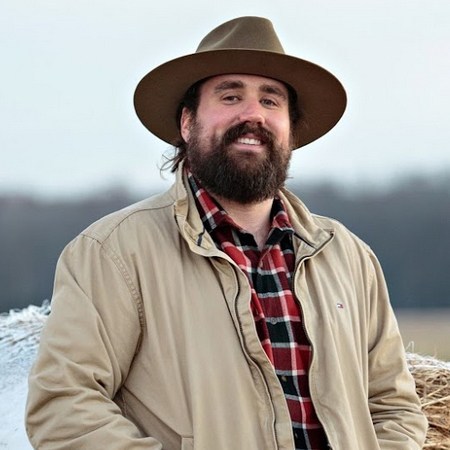Applying XMNR Lessons in the Field
By: Tyler Walston
June 25, 2019

When considering grad school, people often wonder whether the investment of time, effort, and resources will pay off. And if so, when? Tyler Walston is currently about half-way through the Executive Master of Natural Resources (XMNR) graduate program at the Virginia Tech Center for Leadership in Global Sustainability, and what he’s learning in class, and through team and individual assignments, he has applied directly to his current job responsibilities.
I work as an Environmental Planner for Wicomico County, Maryland, where one of my responsibilities is addressing the issue of invasive species. The invasive species initiative was started by the Natural Resources Conservation Advisory Committee (NRCAC), which advises the Wicomico County Executive on natural resource issues that affect the county. During a monthly meeting, an NRCAC member asked if the county was involved with invasive species management. The answer was “no,” so the group began developing a program to educate county employees and residents about how to avoid spreading invasive plants, and eventually to work toward removing invasive infestations.
Moving forward, the group sought to secure buy-in and financial support from Wicomico County as well as three neighboring counties, so that the program could become a collaborative, multi-jurisdictional effort. The group planned to ask for $20-25,000 per county so that an invasive species manager could be hired to apply for grants to fund the project in the future, develop the outreach and educational components, and oversee the removal projects.
Early on, Wicomico County’s Executive, Bob Culver, expressed interest in the project and pledged to include $25,000 in his budget proposal to the County Council for the next fiscal year. The challenge for the NRCAC was then to approach the neighboring counties to ask for a similar pledge. The NRCAC sent a representative to county meetings in order to lobby for funding for the project.
The NRCAC representative implored the County decision makers to support the project based on the perspective of an environmental professional or a land manager—that is, explaining that these invasive infestations threatened biodiversity by outcompeting native vegetation and threatening the ecological health of forests, farms, and other lands across the region. This argument did not resonate with the decision makers in neighboring counties, and no other county allocated funding for the project.
Though it is unfortunate, it is not surprising that the other counties did not respond favorably to our messaging. In our first five months in the program, we have learned that environmental professionals tend to use jargon-y language that is hard to understand for people outside of the environmental field. In our April study meeting, a guest speaker—Eric Eckl, founder of Water Words That Work, an environmental communications firm—gave us strategies to streamline and clarify our messaging in order to make it more effective.

In an earlier study interval, we were given an assignment to use Dr. Marc Stern’s book Social Science Theory for Environmental Sustainability to guide us in applying social science theories to a sustainability issue, and to write a paper about how the theories in the book could help advance that project. Luckily, I had the case study of the invasive initiative that I was involved in. I was able to use the book to find insights on how to use the theories in order to get buy-in from the various stakeholders that could fund the program.
I submitted the paper and received useful feedback from Dr. Stern, who graded our papers for this assignment. Dr. Stern encouraged me to explore additional theories in his book that he thought would help secure more support for the program. Lessons learned from this assignment will be directly implemented into the invasive initiative, and we hope to get greater buy-in as we approach the other county governments in the near future.
My story is fairly typical of the immediate relevance and applicability of the XMNR program. As part of another XMNR assignment designed to help students expand their professional networks, I conducted an informational interview with an XMNR alum who shared a similar experience. My interviewee said that, often, she would learn something in the weekend classroom sessions, go back to work the following Monday, and immediately start applying the lessons learned at her job.
The XMNR19 cohort is about to begin the second half of the program at the time of this post. Along the way, we have been presented with a vast amount of information and the accelerated nature of the program has been a challenge, as we all manage balancing work, school, and our personal lives. However, it is encouraging to think that the thirty-five students in the XMNR19 cohort will continue to learn things in the classroom on the weekend and apply that knowledge in the future as they move forward with their careers in the sustainability field.
---

Tyler Walston is a student in the XMNR 19 cohort and works for Wicomico County as the Environmental Planner in the Department of Planning, Zoning, and Community Development.


